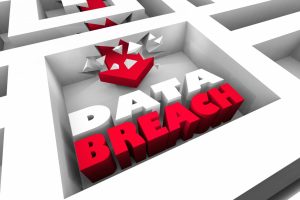Global businesses are going digital. Data and business customer information is now stored on electronic files. Files are being stored electronically, even information sharing and working on shared data is going completely digital. All businesses small to large have already entered or are now entering their Digital Age. From small business houses to large conglomerates, business data is their new intellectual property which is collated as the business grows. As is rightly said “Data is the new oil” Large companies now dictate, and influence suppliers and service providers to adhere to the digital practice to work with them. It is estimated that by 2040 all businesses worldwide would go paperless. We are now truly entering a complete Digital Age.
Digital Age
With the advent of this Digital Age, data protection and data privacy become more and more critical. Businesses are employing IT services to ensure their critical business data is protected and secured. When we talk of data security and protection, we are adding another layer of a barrier to get to the information. This barrier is a contention level for business users who want to get on and do their job. Every additional click of a mouse button or every interface to enter the passwords adds annoyance to them. If you have five hundred employees, it means five hundred extra clicks. As a business, it’s a cost you have to pay to secure your intellectual property.
There is a significant misconception by businesses. When you ask them how they have secured their business data, the immediate answer you get is “We have world-class two-layered firewalls, and we have the most expensive antivirus”. While this answer is right as businesses do need to have these in place for business continuity, but it has been proved time and again any network is pregnable. So even if you have the best firewalls and the best anti-virus, you still need to ensure that the data you hide behind these is also secured. Consider a hacker attacks your perimeter defences and enters into your network. If your information is secured, all he gets is garbage. With securing and encrypting your data, you have made the hackers attempt to steal your critical business data futile.
There are only four steps any business needs to take to ensure they are protected well when they enter the Digital Age:
Step 1: Action at Leadership Level
IT Security and data protection is a business leadership responsibility or simply put – if the business leaders want to protect their data, they have to enforce it. Unless business leaders and managers do not proactively pursue the path of implementing data security, IT infrastructure managers will never be motivated to make life difficult for their business users. The management of any business needs to put a plan in place to ensure all their data is protected. The roll-out of securing the information needs to be in a phased manner. There is no silver bullet. Electronic data is either stationary (files stored in network drives, local machines, mobiles and on individual laptops) or in transit (when emails are sent out and received in the business or files shared). The business leadership needs to ensure that both – the data in-store and in transit needs to be secured. Apart from protecting the intellectual property, it is essential to understand that compliance plays a significant role these days for any business to do business with other companies or even to run the business in a specific region. For example, if you are dealing with any records of individuals who reside in the European Union, then you have to comply with the General Data Protection Regulation or the GDPR in short. If you are dealing with medical records, you need to ensure you comply with the HIPPA. The business must understand what compliance they need to adhere to.
Step 2: Understand and analyse what you need to secure
Businesses must understand what they need to secure. As a business, you need to categorise what is business-critical sensitive information, and if you put a solution in place, will it secure the data? In the planned roll-out, it is vital that as a major exercise, the business needs to visit each department and analyse what they do with their data. This information needs to be put in a matrix and based on the outcome decide if the software or multiple software, they are purchasing solves the problems.
Once you have done a thorough analysis, you can then decide what software will best suit the purpose. Remember, data has to be secure in-store and in transit. One of the significant aspects of securing your data is to understand who controls the keys controls to the data. So, if you select the software which provides secure service in the cloud and they claim to encrypt all the data, it is not necessarily you controlling the encryption keys. When you make a decision, ensure you ask the vendor if you can have complete (physical) control of the encryption keys. It is essential to understand that the most significant revenue generation in Silicon Valley is from advertisements and for companies to advertise, they need to have visibility of your data. It is but natural; software vendors want to peek into your data harmlessly to then use the analytical information for targeted marketing. A most recent example has been the Facebook Analytica case.
Step 3: Educate your customers
As a business, when you adopt specific procedures to secure your data, it also implies that you educate your customers. Business processes and customers define a company. Once you have decided you are going to start securing your data and if this security will affect the communication with your customers or will add a barrier for your customer to access their data, you need to educate your customer. You need to reach out to each customer and explain why you are deciding to secure the data. The reason could be either compliance or then we need to let the customer know that you care for the customer, and hence you are securing the customer’s data. Every business needs to use the best possible means to explain to their customers in the clearest way that we care for you, and hence we are protecting your data.
Step 4: Roll Out
We have seen businesses entering the digital age panic to secure all their data in one go. This causes significant issues with both business processes and customers. Getting any security or encryption software in place needs to be in a phased manner. A suggestive way would be:
- The IT team has to ready and have tested the solution
- The so-called “champions” in each department of the business need to be on-boarded
- A phased training for the employees needs to be put in place
- Inform your customer base
- Do a pilot roll out with some friendly customers
- Get feedback and make corrections
- Go, full board
As we have said, there is no silver bullet to solve every problem. But when businesses are entering the Digital Age, they must understand that companies are made of people or processes and in both the cases the Digital Age will only output intellectual property which is the next ‘oil’. Securing your intellectual property will secure your business.
Galaxkey is a data security platform which provides complete end-to-end encryption for emails and documents. Galaxkey Workspace is an ideal platform to share and work on files collaboratively. With Galaxkey you can have full control of your keys with zero back doors.


